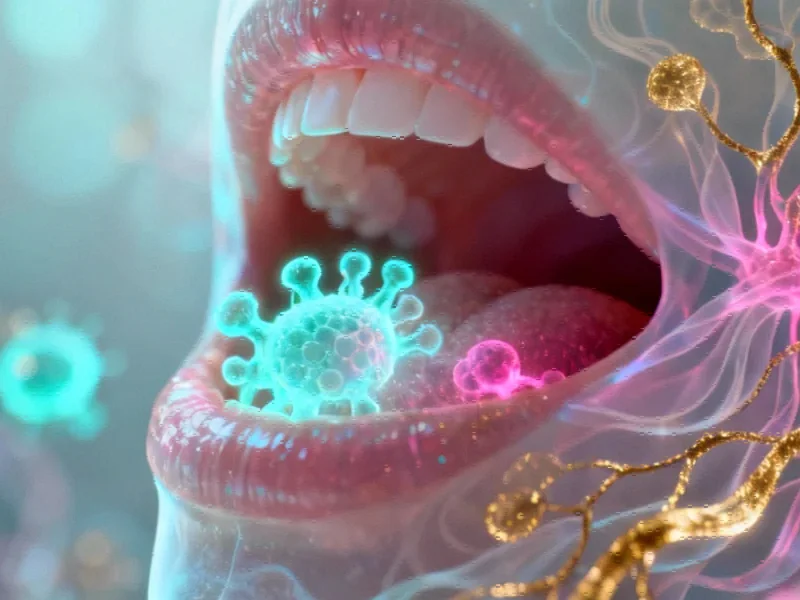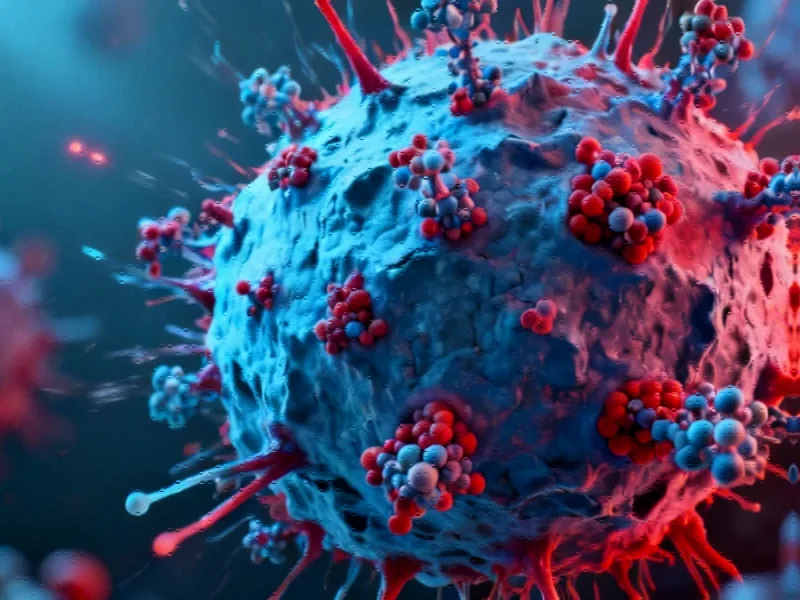Groundbreaking Study Reveals Oral Microbiome’s Role in Multiple Sclerosis
A comprehensive study published in npj Biofilms and Microbiomes has uncovered significant disruptions in the oral microbiome of patients with relapsing-remitting multiple sclerosis (RRMS). The research, which combined shotgun metagenomic sequencing and untargeted metabolomics, reveals how specific microbial changes and metabolic alterations may contribute to the disease’s development and progression.
The investigation compared 50 RRMS patients with 50 healthy controls, controlling for potential confounding factors including sex, BMI, smoking history, and drug therapy. The findings demonstrate that the bacterial component of the oral microbiome shows the most significant differences between patient groups, with viral and fungal components playing a lesser role.
Distinct Microbial Diversity Patterns in MS Patients
Researchers observed significantly higher alpha diversity in healthy controls compared to RRMS patients at the species level, indicating a richer and more balanced microbial ecosystem in healthy individuals. Beta diversity analysis further confirmed distinct clustering between the two groups, reinforcing the concept that MS patients harbor a fundamentally different oral microbiome composition.
These findings align with recent industry developments in medical research that emphasize the importance of microbial balance in systemic health. The study’s sophisticated analytical approaches represent significant advances in how we understand host-microbe interactions in neurological conditions.
Specific Bacterial Shifts and Their Implications
At the individual microbe level, the study identified 102 significantly altered species in RRMS patients, including 96 bacteria, 5 viruses, and 1 fungal species. The most striking finding was that all significantly reduced bacteria in RRMS were Gram-positive, while nearly all increased bacteria were Gram-negative.
Key changes included:
- Significant reduction in Streptococcus and Actinomyces species
- Increase in Prevotella species associated with periodontitis
- Elevated levels of Porphyromonas gingivalis, a known periodontal pathogen
- Increased Fusobacterium nucleatum, linked to various oral and systemic diseases
These microbial shifts reflect broader market trends in understanding how specific bacterial communities influence systemic inflammation and autoimmune responses.
Microbial Community Networks Disrupted in MS
Using topic modeling, an unsupervised machine learning approach, researchers identified five microbial communities that were more frequently assigned to healthy controls. These communities typically contained multiple species of Streptococcus, Veillonella, and Actinomyces.
Particularly noteworthy was Topic 28, which showed the largest difference in assignment to healthy controls and included S. salivarius, an alkali-producing species. The presence of interacting species V. parvula and S. gordonii in healthy communities suggests that beneficial microbial relationships may be disrupted in MS patients.
Functional Pathway Alterations and Metabolic Consequences
The study revealed 20 significantly altered functional pathways in RRMS patients, with 6 enriched and 14 reduced. Critical findings included:
Reduced pathways:
- Superoxide Radicals Degradation (DETOX1-PWY), which protects against acidophilic bacteria
- Molybdenum Cofactor Synthesis (PWY-5354), involved in converting taurine to hypotaurine
Increased pathways:
- dTDP-β-L-rhamnose Biosynthesis (DTDPRHAMSYN-PWY), used by pathogens for cell wall construction
These pathway alterations suggest that the oral microbiome in MS patients may contribute to disease progression through increased immunostimulatory activity and reduced protective functions. The integration of these findings with related innovations in computational biology could accelerate diagnostic development.
Metabolomic Profile Reveals Critical Changes
The oral metabolome analysis showed clear separation between RRMS patients and healthy controls, with approximately 75% prediction accuracy. Among the most significant findings was the reduced level of hypotaurine in MS patients, along with alterations in 13 other metabolites.
Random forest analysis identified 12 metabolites that effectively distinguished MS patients from healthy controls, with hypotaurine emerging as a key discriminatory compound. The analysis achieved 67% accuracy in identifying healthy controls and 89% accuracy in identifying MS patients.
Disrupted Microbe-Metabolite Relationships in MS
Perhaps the most revealing finding was the dramatic difference in microbe-metabolite correlations between groups. Healthy controls showed 1,339 significant correlations, while MS patients exhibited only 65 – representing a 20-fold reduction in coordinated microbial-metabolite relationships.
Notably, significant correlations involving hypotaurine and taurine were only identified in healthy controls, suggesting that these critical metabolic relationships are disrupted in MS patients. This disruption reflects how recent technology advancements are helping researchers uncover complex biological networks that were previously invisible to conventional analysis.
Clinical Implications and Future Directions
This research opens new avenues for understanding MS pathogenesis and developing novel diagnostic and therapeutic approaches. The identification of specific microbial signatures and metabolic alterations provides potential biomarkers for early detection and monitoring of disease progression.
The findings also suggest that interventions targeting the oral microbiome, such as probiotics or targeted antimicrobial therapies, might offer new treatment strategies. As research in this field advances, integrating these findings with industry developments in personalized medicine could transform how we approach autoimmune neurological disorders.
The study represents a paradigm shift in multiple sclerosis research, moving beyond traditional immunological models to incorporate the crucial role of the oral microbiome and its metabolic products in disease development and progression.
This article aggregates information from publicly available sources. All trademarks and copyrights belong to their respective owners.
Note: Featured image is for illustrative purposes only and does not represent any specific product, service, or entity mentioned in this article.



